By Oleg Volk
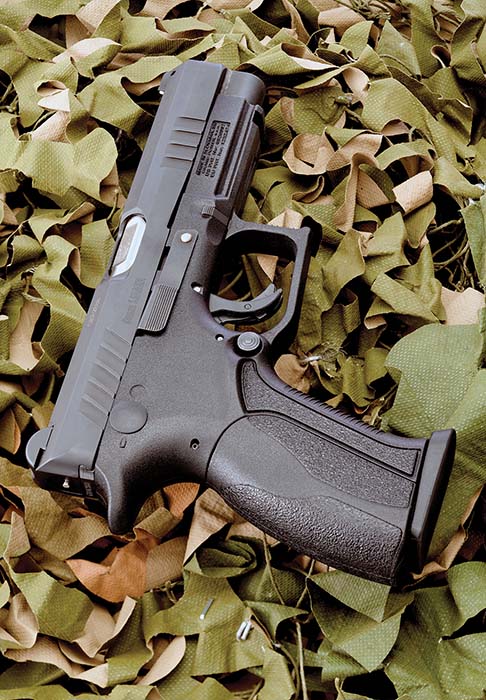
When Protection Is Important
The first Browning patent for a rotary breech handgun was filed in 1897. Rotary breech military sidearms have a long service history, going back to the Austro-Hungarian Roth-Krnka M.7 produced by Steyr, a clip-fed 8mm Army sidearm in service from 1909 to the end of World War II. Further developed as a 9×23 Model 1912, this type of pistol saw extensive use in WWI. That gun set the pattern for the rotary breech designs: two tabs at the rear of the barrel moving in a helical groove. The advantage of rotary actions is mainly in the attenuation of recoil, while the disadvantages all stem from considerable friction between the barrel lugs and the unlocking raceway. That friction both calls for increased lubrication and makes the weapon more sensitive to dirt. Wear over time causes inconsistent position when locked into battery, degrading accuracy. As a result, the next military rotary action didn’t show up until the late 1960 9mm French MAB15. While Beretta and SIG SAUER-Mauser both came out with rotary breech pistols, they were relatively bulky and expensive, limiting commercial sales. Most recently, the subcompact Boberg Arms XR9-S used a rotary barrel with improved geometry, but the need for extensive lubrication was not ideal for a pocket pistol. In 2016, Bond Arms Inc. improved the former XR9-S, now the Bond Bullpup, with a slick barrel metal coating to solve that problem. As a whole, rotary actions proliferate in rifles while mostly a curiosity in service handguns … except in Slovakia.
Enter the Grand Power Line
Designed by a Slovak Army officer Jaroslav Kuracina during the 1990s and first produced in the early 2000s, the double-action Grand Power K100 was an elegant, simpler and more compact solution than previous rotary designs. The smoothly contoured track in the outside of the barrel rides on a simple, easily replaceable cylindrical pin built right into the steel frame. With the barrel travel prior to unlocking from the slide being 10mm compared to Glock’s 3.5mm, the firing cycle is slower. The K105 machine pistol has a cyclic rate around 850–900 rounds per minute, compared to the rather less controllable 1400rpm G18. A lot of the recoil energy goes into rotating the barrel, reducing felt recoil further. Finally, the barrel doesn’t require a feed ramp, allowing a fully supported chamber, and may be placed closer to the frame, reducing muzzle flip. A mid-size Grand Power firing powerful 10mm Auto ammunition kicks much less than a longslide 10mm Glock. The 9×19 K100 and Q100, very similar guns except for the firing mechanisms, feel closer to 22WMR pistols than to other 9mm designs. Even better, the recoil spring is about 40% lighter than with tilt-barrel designs, making administrative handling easier. This efficient design combined with high quality manufacturing helps longevity: K100 has been tested beyond 100,000 shots without wearing out. In the U.S., K100 was first imported by STI as GP6 and now by Eagle Imports (grandpower.eagleimportsinc.com) as K100 and other variants in a variety of lengths and calibers.
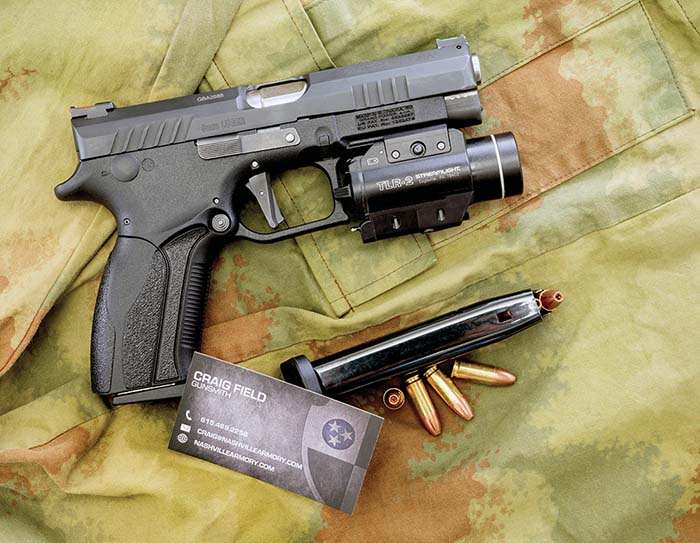
The Q100
Grand Power Q100 is a striker-fired rotary evolution of that standard Slovak military service sidearm. Striker design provides consistent trigger pull without requiring a manual safety, and the back of the slide is better sealed than hammer-fired designs against dust. The trigger has smooth 4-pound pull that feels like a revolver, with no perceptible stacking. The reset is long, about 75% of the overall travel. An ultra-short reset trigger just got finalized and makes the pistol even easier to shoot accurately. Using a straight trigger blade and a new sear bar, this upgrade reduces the trigger pull to 3 pounds and the reset to about 25% of the already shortened overall travel, permitting controlled rapid fire with greater ease. Combined with the smallest of interchangeable backstraps, this trigger also provides improved fit for shooters with small hands.
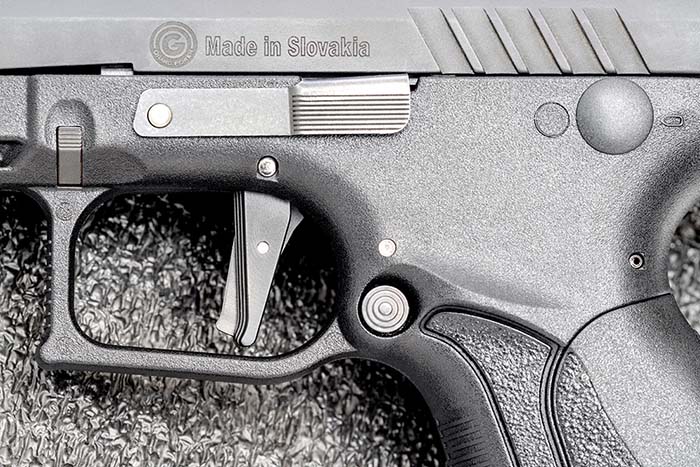
The full-size Q100 and its compact Q1S variant are the latest in the handgun family that now numbers a dozen models with a high degree of interchangeability between frames and slides. Q100, dispensing with external manual safety levers but otherwise very similar, should do as well. With the barrel and the lock-pin rolling against each other rather than sliding as with most rotary designs, the wear is minimized along with the need for lubrication. The straight-line kinematics of the action also help accuracy, making even the basic non-specialized carry pistol close to match accurate. Q100 comes with basic drift-adjustable 3-dot sights, but red or green fiber-optic front sight and rear sights are also available. Replacement rear sights have an undercut rather than convex sight body, providing better contrast.
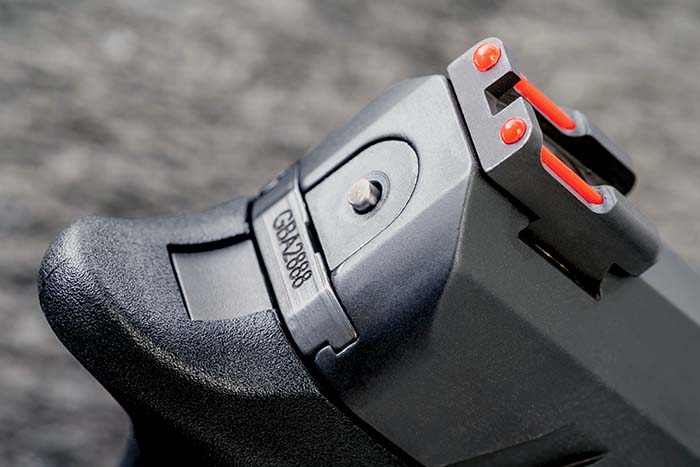
Accuracy and Reliability
The longslide variant of this action is accurate enough for consistent silhouette hits out to about 100 yards; the slightly shorter Q100 gives a similar confidence level to about 75 yards with stock trigger and further out with the short reset upgrade. At 25 yards, I had no trouble knocking down 3×4-inch steel pop-ups with every shot at the rate of two shots per second. The usual 7–15 yard courses of fire are ridiculously easy—the pistol has excellent balance and grip angle, while mild straight-line recoil speeds up follow-up shots almost to the rate possible with a .22 rimfire. The accuracy of this pistol is quite remarkable—at 7 yards, any bullet holes that aren’t contiguous are definitely the shooter’s fault. Moreover, since the kick is minimal and the trigger is smooth, Q100 won’t induce a flinch.
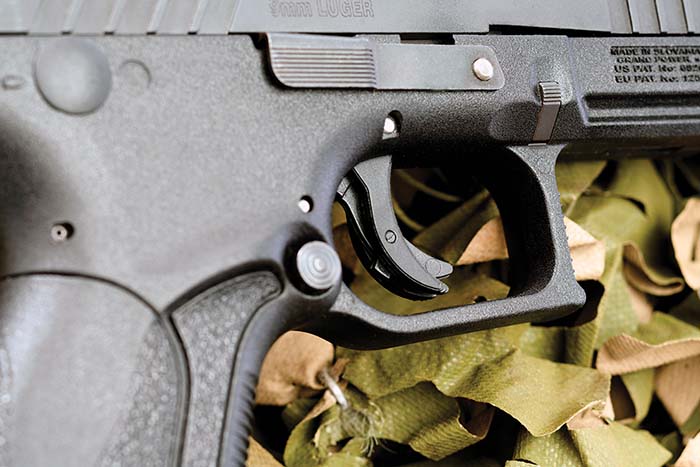
Unlike the XCalibur longslide that I carry as my daily sidearm, Q100 is a more mainstream service model. With an unventilated slide, it should be more dust-resistant; although XCalibur has lasted 1,500 rounds so far with no malfunctions despite the lack of cleaning. Based more closely on the military model, Q100 should be equally reliable. The long cycle duration means that the action unlocked at a lower residual pressure, keeping the chamber area clean. The lockup lugs of the barrel are substantially forward of the chamber, so gunpowder residue doesn’t even get to them. Field-stripping is super simple: pull the twin tabs under the front of the trigger guard, pull the slide all the way back and lift its rear end off of the frame in a manner similar to the Walther PP. The recoil spring stays on the captured articulated recoil rod. Reassembly is as simple; one has to just remember to leave the barrel in the forward position protruding from the slide before putting everything together.
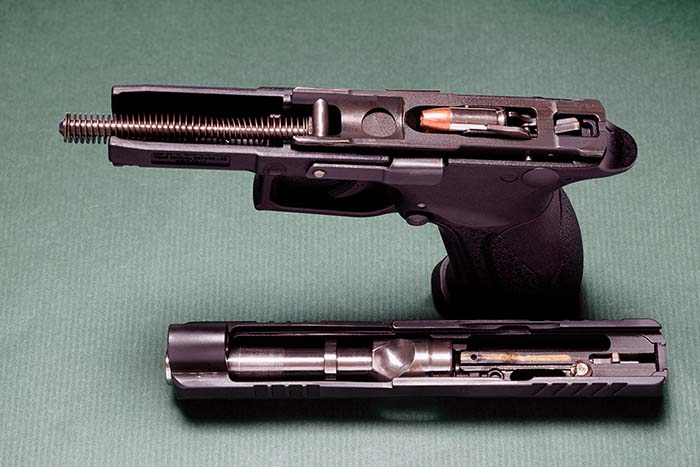
Specs
Q100 specifications are mainstream: the 4.3-inch barrel and 15+1 capacity are conventional, as is the 26-ounce weight. The gripframe is plastic, with swappable backstraps, the receiver is steel. Most of the parts are finished in surface-hardening Tenifer. The articulated sub-trigger and drop safety are present, but there are no manual levers. Everything is textured for secure retention but not abrasive on skin, making intensive range sessions a breeze. My sole complaint is the tendency of the ammunition in fully loaded magazines to rattle slightly when shaken, an issue that’s going to go away soon with the pending revision of the magazines. Thanks to the rotary action, standard and +P ammunition produce only minimal recoil and very slight muzzle flip. The pistol will feed and cycle pretty much any bullet profile and weight, but the overall power level has to be at least close to the standard minimum. An 88-grain range load at 1050fps won’t even unlock the slide, while the same bullet at 1450fps runs great. On the heavy side, 158gr subsonics shoot reliably and accurately. 124gr +P JHP of various makes seem to be the ideal combat load for Q100—terminally effective but still easy on the hand.
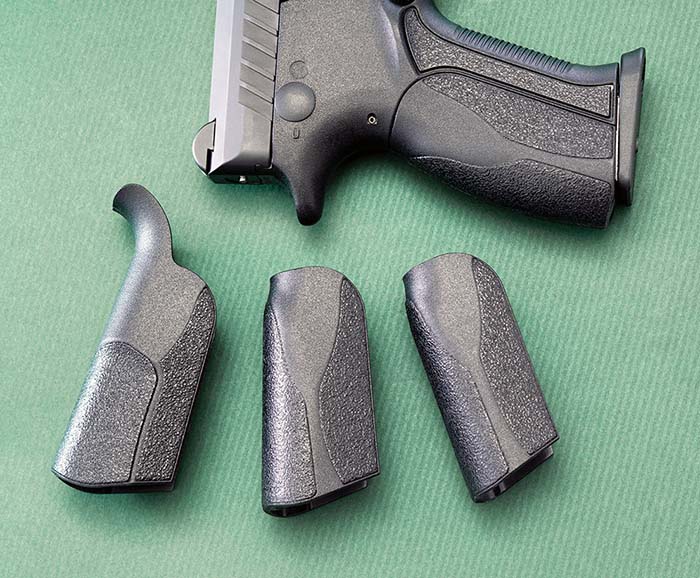
Besides pistols, Grand Power (grandpower.eu/?lang=en) produces Stribog 9mm submachine guns of impressive accuracy and modernized 12.7mm DShK machine guns. You could say that they have a pretty good grasp on what makes good military and police weapons.
Recommendations
Everyone who has tried my GP handguns has remarked on the ease of shooting them. They are ambidextrous out of the box, with slide stop levers and magazine releases duplicated. To my mind, Q100 is among the best modern designs for both the army sidearm and the personal self-protection roles. A number of companies make holsters for Q100, but the standout brand, in my opinion, is Falco (falco.sk) located just 30 miles from the Grand Power factory. They manufacture a wide variety of Kydex, leather and nylon holsters for all of GP pistol models, including the Q100. Made to order, they accommodate a variety of weapon lights, though the TLR2 compatible samples didn’t quite fit around the light. All other holsters and magazine pouches were superbly suited for daily carry, most enabling effective concealment. My own view on the Grand Power line is simple: I carry one by preference, and one of my family members will carry another shortly. When protection of important lives is on the line, Grand Power is my first choice in handguns.
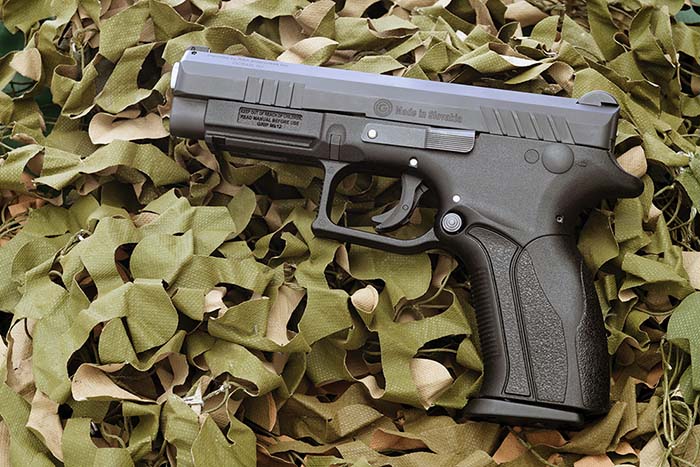
FOR MORE INFORMATION
grandpower.eagleimportsinc.com
This article first appeared in Small Arms Review V23N3 (March 2019)











